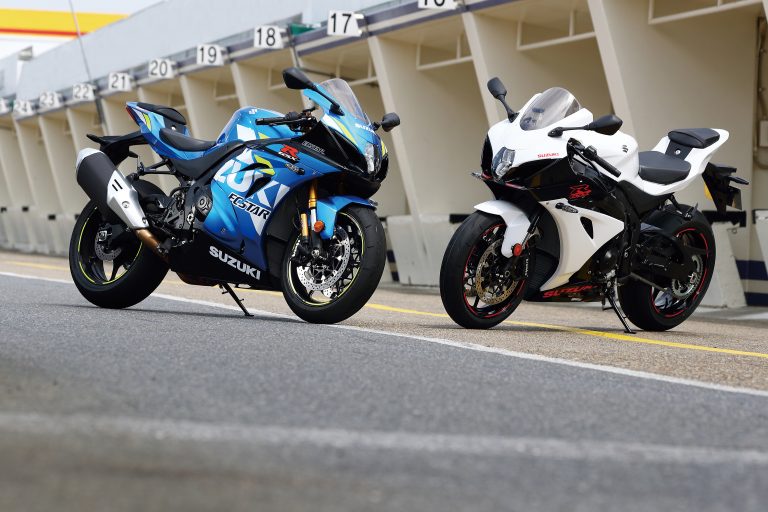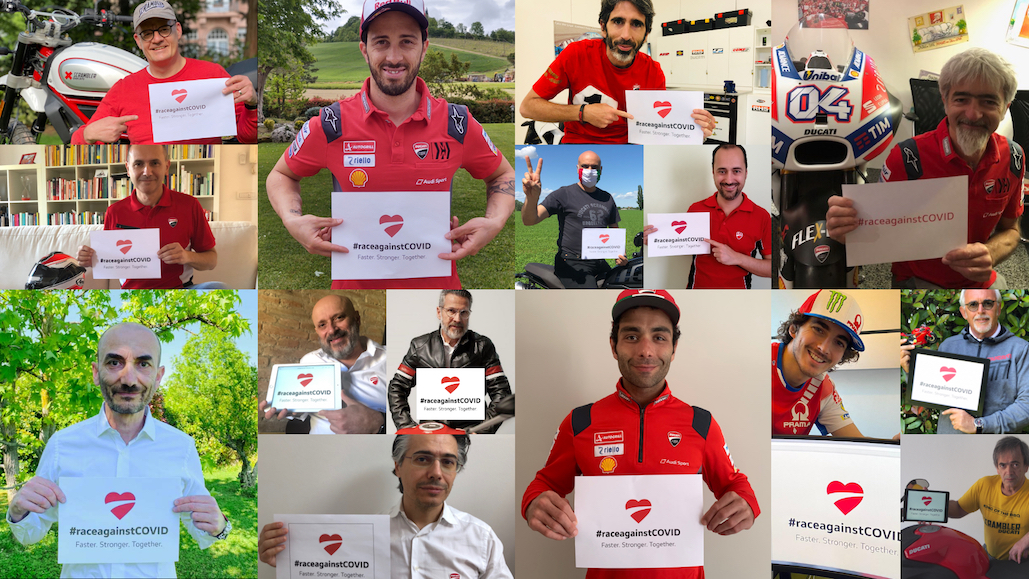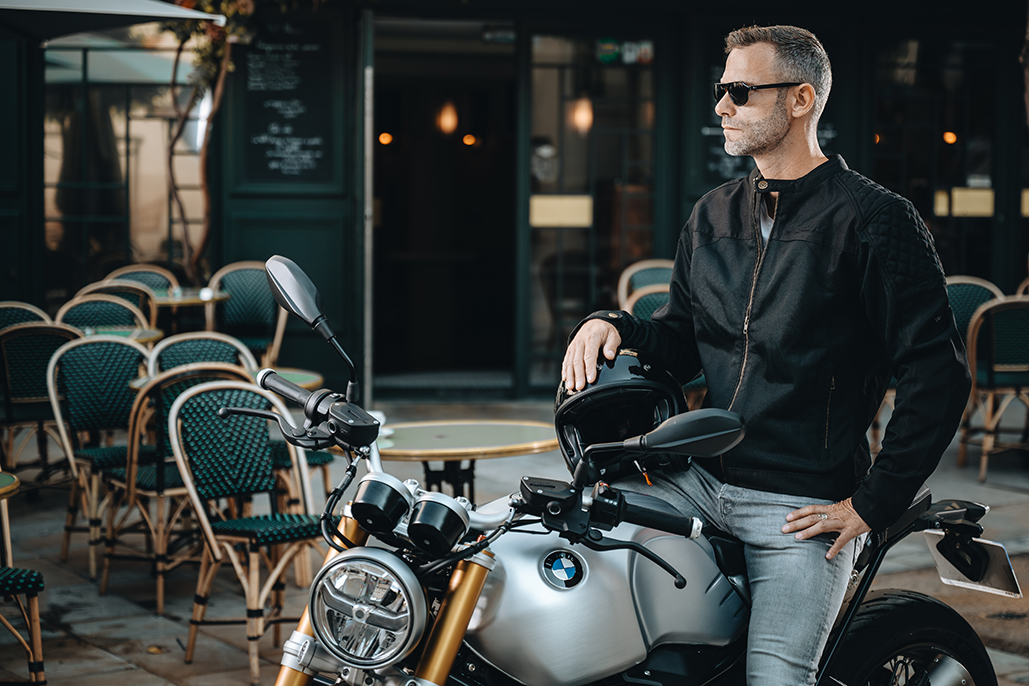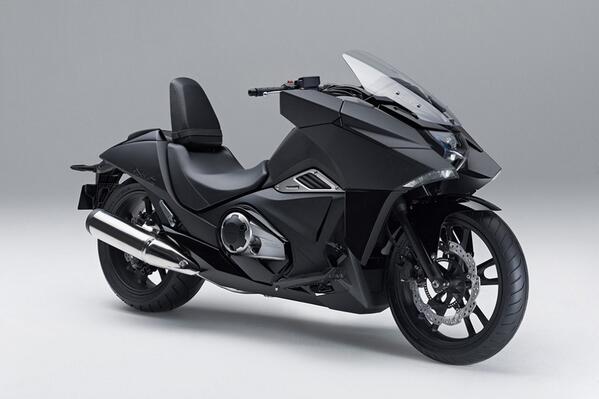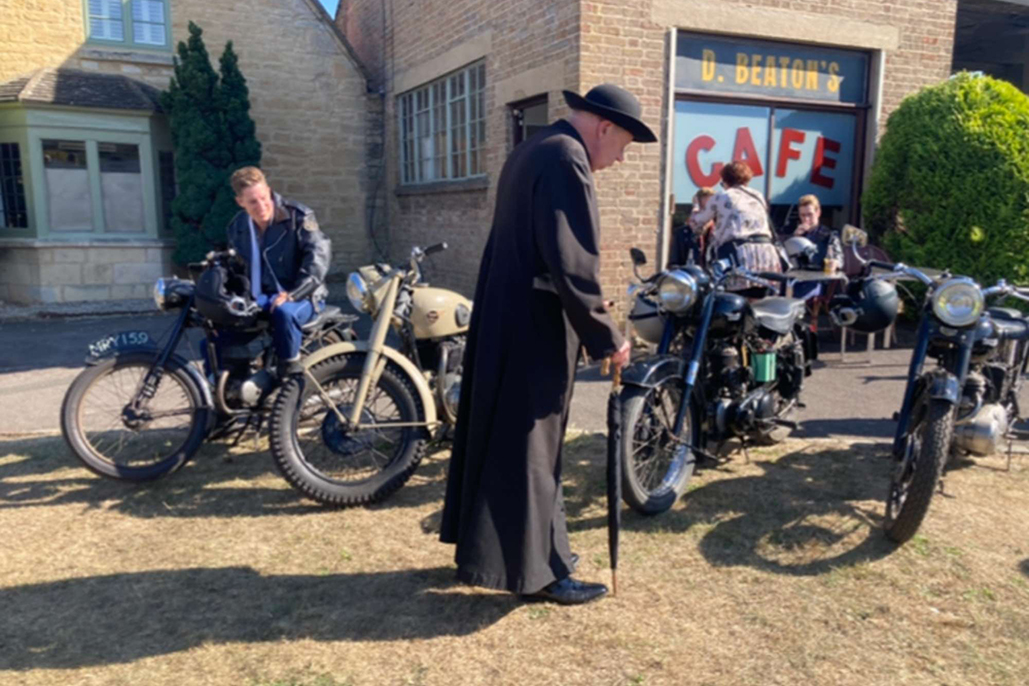The RC51: Honda’s Twin To Win
 Two decades ago Honda, so often kings of the multi-cylinder four-stroke racing world since the stunning arrival of several jewel-like Grand Prix machines in the 1960s, had realised that something truly new was required to stay in the important game of winning WorldSBK championships.
Two decades ago Honda, so often kings of the multi-cylinder four-stroke racing world since the stunning arrival of several jewel-like Grand Prix machines in the 1960s, had realised that something truly new was required to stay in the important game of winning WorldSBK championships.
Something new for Honda, at least.
In 2000 the biggest Japanese manufacturer of them all adopted a 1000cc V-twin engine configuration, the same basic format that their main WorldSBK rivals – Ducati – had been using to such great effect long before the WorldSBK party had officially started in 1988.
In reality, the Honda VTR1000SP1 was a very different design to the Desmodromic, 90° belt-driven ‘laid down L’ of the Ducati.
The reason for the birth of the Japanese twin-spar aluminium framed 90° V-twin was simple. Having won the Superbike Riders’ Championship with Fred Merkel and the RC30 (twice), then John Kocinski and the RC45 as recently as 1997, the writing was on the wall for the whole era of 750cc four-cylinders being competitive against bigger-bore twins. Even the title-winning Honda V-fours.
Aprilia, another Italian marque which competed against Honda in the smaller GP classes, had already jumped on the big V-twin bandwagon as they entered WorldSBK full of ambition in 1999. Even little Bimota had hybridized their small-production run Italian philosophy with a V-twin Suzuki engine for the 2000 WorldSBK season.
Despite all this V-twin momentum building up elsewhere it must have taken a degree of deep thought – even a corporate deep breath – before the go-ahead was given to abandon the much-loved V-four configuration Honda had made their own trademark for many years. Especially given that any racing version of the new road going V-twin would be an instant technical challenge against the prime exponents of the V-due art, Ducati.
Honda, however, has never been a company lacking ambition.
The new bike, the VTR1000SP1 (suffixed ‘W’ for the works bikes in WorldSBK), had a relatively upright single crank V-twin engine layout, four valve heads fed by two fuel injectors per cylinder. Engine capacity maxed out at 999cc, by regulation.
Philosophically radical it may have been but it was relatively conventional, aside from the roadbikes’ side mounted coolant radiators, brought to the front on the racebike. And it worked well from the very start.
New Zealander Aaron Slight, and the eventual double World Champion Colin Edwards, were the first to transition from fours to twins in Honda’s full HRC Castrol Honda team, based in the UK but very much a direct factory effort from Japan. With Showa suspension and Nissin brakes on the racebike, it was all very Japanese indeed.
Edwards, a Texan from head to toe, knew at that point in time Honda – or maybe anybody – probably needed a twin to win, based on at least one central truth in any form of motorsport.
“The old saying goes that there is no replacement for displacement, and that still stands true,” said Edwards, 20 years after he won the first of his two WorldSBK crowns. And it was not just a cubed route to success for the larger twin, it was also its very nature compared to a high-revving 750 four. “The thing with the twin was that it was like riding a Supersport bike,” remembers Edwards. “It had such easy, deliverable power. There was no ‘hit’ – you could do it in your sleep. It was such an easy bike to ride compared to the four-cylinders.”
Edwards had been a convert to 1000cc twins before he even got one of his own, even in his pre-RC45 V-four days it seems. “Before I joined Honda I was with Yamaha and I said to them, ‘let’s build a twin!’” stated Colin. “Then when I joined Honda they decided they were going to do it, so obviously we were excited about it, knowing what Honda do with motors. They had ability to extract a lot of power out of it and we were excited about it.”
Edwards first got confirmation that the VTR1000SP1 was on the way as early as 1998, and first rode it in early 1999.
“We heard in 1998 that they were building it,” he said, “We went testing on it in Australia, at Phillip Island and Eastern Creek in – I think – February 1999. It was a full year before they even brought the bike out. I rode two days on the twin at PhiIlip Island. The bike was way slow; it was in a somewhat production mode at that time and it did not have any kit on it to speak of. But our lap times were about three-quarters of a second behind the RC45, I want to say, and we were going about 20-25kmph slower down the straight. We knew it was slow just because they had not had any time to develop it. We knew we could get more power out of it, but at that time we had just started playing with fuelling and mapping.”
As well as being fast around the corners, and eventually fast enough down the straight after the first year of non-competitive engine development, Edwards also found the bike relatively easy on tyres compared to the higher-revving fours he had known before.
“The twins were definitely easier on tyres, but at that time we were going through – I am not going to say a transition – but there was so much development going on with Michelin at that time,” confirmed Edwards, who was the fastest test rider imaginable for Michelin in those heady days before single make tyre regulations became almost ubiquitous in most championships. Tailored options were the norm. “Everybody was on different casings and different rubber… everybody had pretty much carte blanche. It was sort of, ‘try this one and if it doesn’t work try that one.’ Then they would come over and say, ‘Fogarty likes this one, why don’t you try this one?’ You did not have two or three to choose from, like nowadays. It was quite different back in the day.”
Another pleasant characteristic of the new V-twin was that it was less finicky in its basic on-track preparation. “It was definitely easier to set-up,” said Colin.
But despite all the new things to understand, and while trying to race to win the title during a season in which nine different riders on seven different makes of machine won races, Honda’s brand new V-twin and Edwards had still secured the Riders’ Championship. They took eight race wins along the way, including the first and last of the season. A shift to 1000cc had led to 400 championship-winning points.
It was top teamwork, after a difficult but finally rewarding debut season for the VTR SP1. To the query of was it more man or machine in 2000, Edwards stated, “I think it was both things.” He was certainly ready to win outright as much as the new bike was. “I finished second the year before and I had been improving year-by-year. My level of riding was getting to the top level and ready to fight for the championship. At the same time, the bike we brought out was easier to ride but by no means perfect. The SP2 I would say was perfect. That was a great bike. The SP1… we did have to play around with it. It was not like every race was awesome.”
As well as so many challenges for individual wins, Edwards was also competing in the era of tyre wars, which his Michelins usually won, but by not every time. Some races were downright stressful for this reason, and more.
“It was stressful!” agreed Colin. “We had that tyre thing going on, and then you would show up at Sugo or Donington, or anywhere where Dunlop were on point and there was nothing you could do. We did have bad weekends and you just had to come out of a bad weekend the best you could.”
With limits of the amount of testing he could do on WorldSBK circuits, Edwards made the most of his other riding opportunities, especially in France. “I think that was around the time that you had two allocated test tracks, and we did more tests at Clermont-Ferrand for Michelin than anywhere,” remembers Colin. “We could not have done without that.”
After the then all-time WorldSBK great Carl Fogarty (Ducati) had been eliminated from 2000 season and then his career through a nasty shoulder injury, Edwards’ was given no respite in his title charge after Noriyuki Haga and his homologation special Yamaha found their stride.
“The first race, in South Africa, I won. Haga was right there with me; and Fogarty. In the second race Haga just cleared off – by seconds. He was gone and I was riding my ass off. It was just weird; why had he not done that in the first race? A setting change, whatever, I dunno? But it was a little bit abnormal I thought at the time.
“At Brands Hatch all I had to do was to have, I think, two tenth places, even if they had not taken those points away, so it was in the back of my mind. It was Brands Hatch and I usually won there, so I was not really stressed.”
In the final chapter of a multi-venue rolling fairytale, Honda’s first WorldSBK V-twin and Edwards won the title, and would do so again on the subsequent SP2 in 2002. But it was that first winning season in 2000 that blew everybody’s mind, even if it took every joule of energy and spark of inspiration the manufacturer, technical partners, team and rider had to make the outcome certain.
“Adrian Gorst was my crew chief, which he had been since 1998 and Neil Tuxworth was leading the team – we had a really good crew,” affirmed Edwards.
“Honda put in a lot that year, I would say a full factory effort. We had some Japanese staff come around race-by-race. As far as the amount of effort that was put in I would say maximum. There was nothing that we were missing. That was also the first year that me and Valentino Rossi did the Suzuka 8-Hour. So all of this went into developing the bike – it was a big, big effort on the twin that year.”
Edwards continues “We won WorldSBK, we beat Ducati and the bike was awesome, but the 2002 bike was even way better. It was a development thing. We did the whole first two years with the SP1, found out where our weaknesses were, where we could make it better, and built that into the 2002 models. That is just R&D, but from where they started in 2000, obviously they started at a really good spot – and we won the championship.”
In the end, the RC51 in its three years of full WorldSBK competition amassed 26 victories, a further 30 podium places and two Riders’ Championship titles in 2000 and 2002 with Colin Edwards.








